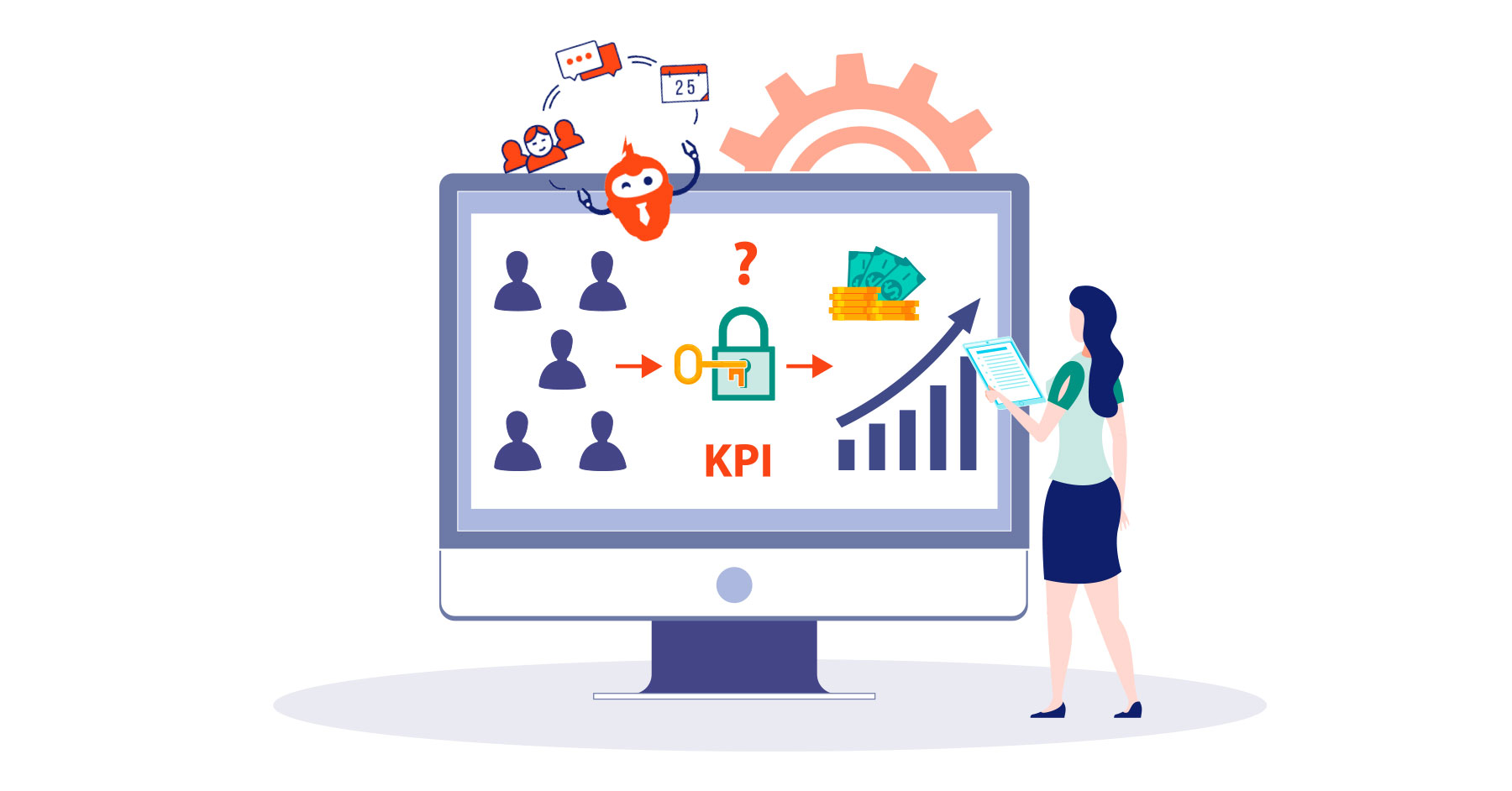HR has always been seen as a cost centre and it’s common for many departments to struggle for relevance because they don’t speak the language of business bottom lines or track metrics.
HR managers say “But we’re different, our impact cannot be measured the same way.”
Well, that’s a one-way ticket to getting minimal funds in the future.
HR departments need to show how their dollars impact actual business ROI (return on investment).
Instead, focus on building a business case for what the department is doing. You do that by focusing on the right metrics.
HR Metrics and Analytics
HR metrics are operational measures. They address how effective and efficient an organisation’s HR practices are.
HR analytics, on the other hand, guide decisions and helps management understand how these investments in human capital assets contribute to the success of 4 principal outcomes:
1) Generating revenue
2) Minimising expenses
3) Mitigating risks
4) Executing strategic plans
Essentially HR metrics are numbers that act as benchmarks so that analytics can be applied later to address how to change or improve a certain outcome.
“Ultimately, metrics define what you are shooting for. They define your objective,” says workforce scientist, Michael Housman.
Most Common HR Metrics for Small Business
Productivity and Performance
1. Internal Promotion Rate
More internal promotions indicates successful employee retention and growth of top performers.
Internal promotion rate = No. of employees promoted / Total no. of employees
2. Internal Promotions vs External Hires
This ratio measures how many current employees are considered for promotion compared to the number of externally attracted applicants. This can be an indication of the quality of employees employed over the years. It’s also particularly important for organisational succession planning.
3. Performance of New Hires
Performance reports are the best gauge to find out how well new hires are performing compared to that of existing employees
4. Cycle Time to Process Payroll
This is the number of business days in the payroll process from start to finish. A time period that’s too long could indicate assistance/updated process is needed.
Cycle Time to resolve process payroll = Date payroll processing ends – Date payroll processing starts
5. Cycle Time to Resolve Payroll Errors
In life, mistakes happen. No matter how much attention we pay to our work, we’re only human. This is the number of business days it takes to resolve payroll error reported by employees. A high number of days is a sign that HR might need to review the payroll process.
Cycle Time to resolve payroll error = Date payroll error was resolved – Date payroll error was made
You might be interested in: Are you making these payroll mistakes? Avoid them with a HRM system
6. Percentage of Workforce Below Standard
Smart HR departments know that having working employees does not mean a performing team, so this metric should be used to measure under-performing members.
Workforce below standard = No. of employees not meeting KPI / Total no. of employees
7. Billable Hours per Employee
If your company that bills clients for work done, you’ll want to use this metric to figure out if your employees are meeting the minimum number of hours. Eg. lawyers
Billable hours – Billable hours / Total hours worked
8. Revenue per Employee
Workers, on average, should add enough value to justify their employment. This will vary from job scope to job scope, so you have to go back to the 4 principal outcomes.
Revenue per employee = Total revenue / No. of employees
9. Profit per Employee
One of the more common HR metrics, measuring profit per employee tells you if you need more staff, or whether increased employment is merely eating into your profits. Tracking this number ensures you’re always operating at maximum output.
Profit per employee = Business profit / No. of employees
10. Duration to Full Productivity
This is a measurement for new hires. And the time to productivity is an HR metric that absolutely matters.
There’s no point hiring (and paying them) when performance is subpar for extended periods of time. It’s calculated as a time frame; the number of days, weeks or months.
For this, you’ll need to define what it means to be fully productive. Eg. if the average waiter can manage 7 tables at once during peak hour, how long will it take for your newly hired wait staff to do likewise?
Duration to full productivity = Date new hire hit productivity target – New hire start date
11. Training Cost per Employee
Training is essential to onboarding new hires and increasing the skills of existing employees. Some businesses include the labour cost of employee hours spent on courses as well. Don’t forget to include travel costs, course fees, time spent administering training, liaising and scheduling the training etc.
Training cost per employee = Total training costs / No. of employees
12. Overtime Percentage
Calculating overtime as a percentage reflects how efficient your scheduling is. This is especially crucial if you have part-timers in your company. Most employers would prefer to avoid paying overtime as it’s costlier by 1.5-2x.
Overtime percentage = Overtime pay amount / Total payroll
13. Absenteeism Rate
Unscheduled absence from work could mean a worsening work climate, increased stress in the workplace, a flu epidemic, or loss of interest/engagement at work. As a rule of thumb, an absence rate of 1-2% is normal.
Absenteeism rate = No. of days absent/ No. of days under employment
Employment
14. Average Tenure
The average length of time an employee spends with the company indicates employee satisfaction and talent retention.
15. Average Time to Fill Job Vacancy
For small businesses, this might not seem super important. But you should be aware of resource optimisation. So this tracks how efficient the hiring process is in terms of time resources used to fill a vacant spot.
16. Cost per Hire
Acquiring new talent, just like acquiring a new customer, can be costly. This metric includes the total amount spent on marketing, hiring, referral fees etc per hire.
Cost per hire = Total recruiting costs / Total number of new hires
17. Annual Recruiting Cost
Similar to tracking your cost per hire, you want to manage how much you are spending on recruiting. This includes your sponsored job posts, hiring manager’s time, opportunity cost, recruitment activities etc.
Annual recruiting costs = Total of all hiring expenses for the year
18. New Hire Failure Rate
Usually measured based on the first 90 days of employment. This determines how successful the talent acquisition process is in finding the right candidate for the job.
New hire failure rate = No. of new hires that do not meet probation criteria / Total no. of new hires
19. Candidate Conversion Rate
How many candidates are you shortlisting and how many accept the offer to become employees? This is a measure of the quality of job posting.
Candidate conversion rate = No. of new hires / Total no. of candidates considered
20. Attrition Rate
Helps a company figure out how successful they are at retaining talent. Every organisation definitely should be tracking this metric. It’s calculated based on a fixed time period, eg. 1 year.
Attrition rate = No. of employees who left / Avg. no. of employees
21. Turnover Rate for Highest Performers
The turnover rate of top performers is negative and comes at a much higher cost than any other of the common HR metrics mentioned. It not only indicates the success of your company’s talent retention, but it also aids in planning for talent replacement.
Turnover rate of highest performers = No. of high performers who left last year / Total no. of high performers identified
22. Number of Full-Time Employees
The size of the company workforce gives a broad overview of the growth of the business in general.
23. Number of Contractors
Can be compared to the number of full-time workers to understand workforce trends and requirements.
Too many contractors and associated workers could mean current employees lack several important skills and it’s time for training.
24. Voluntary Termination Rate
Determines the number of employees resigning from the company over a given period of time. It’s common to track this along with other HR metrics like attrition rate, average tenure and the average time to fill a vacancy.
25. Involuntary Termination Rate
Determines the number of employees fired over a given period of time. A high number could mean poor screening or qualification practices during the hiring process.
Culture
26. Net promoter score
This is a key HR metric that measures how likely an employee is to recommend their organisation as a place to work, to others.
“On a scale of 0-10 how likely is it that you would recommend [company name] to your friends, family and/or business associates?”
Employees that give a 6 or below are considered Detractors. A score of 7 or 8 are Passives, and a 9 or 10 are Promoters. To calculate your Net Promoter Score (NPS), subtract the percentage of Detractors from Promoters. So, if 50% were Promoters and 10% were Detractors, your NPS is 40.
27. Employee satisfaction index
This is a metric underlying talent retention. Using a company-wide survey can be helpful in gauging employee happiness and satisfaction working in the company. Better happiness = higher productivity.
28. Employee wellness
To keep productivity high, you want to evaluate how well your employees are feeling on a holistic level.
This includes physical, mental, emotional and spiritual aspects.
You can measure everything from the number of sick days taken to the number of overweight staff.
What you measure and how you measure it depends on what behaviour you’re trying to improve.
29. One-On-One Meeting Frequency
Want to know what’s happening on the ground? Talk to your employees.
The best metric you can use as an HR exec or manager is asking the department heads how often they have lunch with their employees. When the number is zero, you know they are not engaged in their staff. And that weakness that might be affecting turnover and satisfaction.
You might be interested in: HR matters: All you need to know about employee record keeping
Now, the next step is for you to create an HR scorecard to stay focused on activities to support the company’s overall goals.
Since it’s not common for HR departments to be included in strategic planning processes, creating an HR scorecard is a way to expose the department with clearly understood metrics at the executive level.
You now have a list of 29 common HR KPIs and the know-how to put the metrics into play with your scorecard. It’s time to bring the most value to your organisation!



